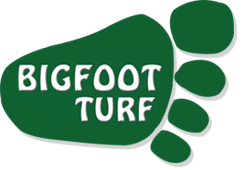What is a compacted lawn? Compacted lawns occur after the soil has been walked on, played on and driven on, so that the soil becomes tightly impacted, eliminating the flow of water, oxygen and nutrients to the lawn’s roots. This stunts growth and the overall health of the turf, as fertilizers, nutrients and water is not being absorbed into the soil.
How to test your lawn? A compacted lawn is difficult to spot with without examination. The best way to test your lawn is sticking a fork into the soil. If you struggle to get the fork half way into the ground, you have a compaction problem.
What is the best way to treat a compacted lawn? Aeration is the only way to treat your compacted lawn. This process supplies air to the soil and gives way to oxygen, fertilizer, nutrients and water. This process works best at the beginning of your lawn’s growing season as the weather begins to warm up. Water your lawn thoroughly the day before you plan to aerate; this makes the process easier and more effective.
If you have a small area of your lawn needing aeration, use aerating sandals or a sturdy garden fork. Simply insert the fork into the lawn to punch holes into the turf. To achieve adequate aeration you need to go over the area a couple times in different directions.
For treating compaction over a large area, rent or hire a core aerator. A core aerator works by removing small cores of grass and soil from your lawn to create the much-needed spaces in the soil. Before using a core aerator, flag all irrigation systems and hidden objects in the lawn to avoid during the process. Only go over your lawn once with the core aerator.
Annual aerations are recommended to avoid soil compaction but if you have areas with a constant flow of traffic, more frequent aerations is adviced.
